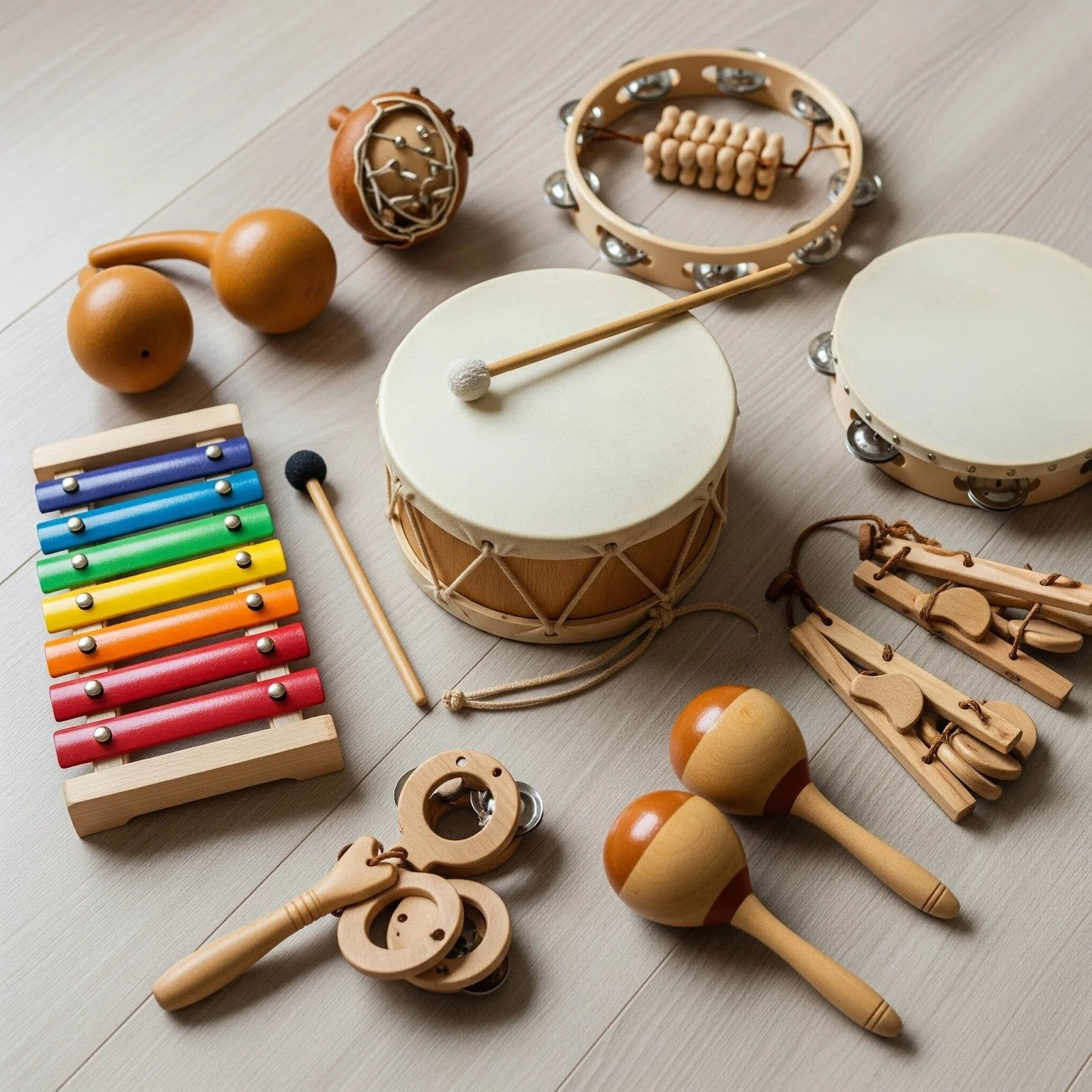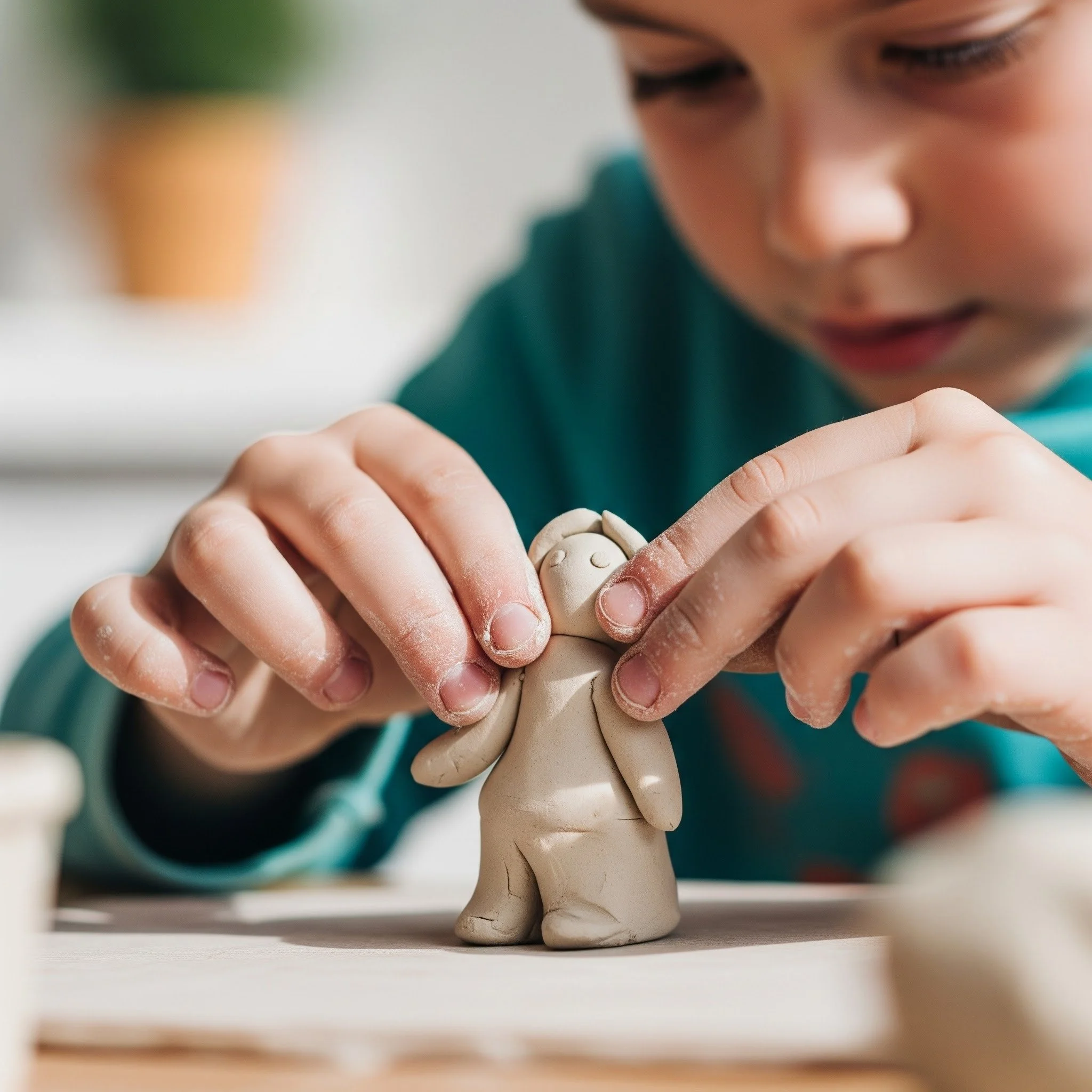Play and Creative Arts Therapy
Helping children express what words cannot
Play and Creative Arts Therapy is a form of psychotherapy that uses play and creative expression as a way to explore thoughts and emotions. Similar to counselling, it provides a safe, supportive environment where children can express themselves freely and work through challenges at their own pace.
Through play, children often communicate symbolically. The therapist observes the themes and metaphors that emerge, offering insight into the child or young person's inner world and emotional experiences.
The Play Therapy Room
In the Play Therapy room, toys, sand, art and creative materials become tools for emotional expression and understanding. Within a safe and accepting relationship, the Play Therapist helps the child make sense of experiences, build trust and confidence, and develop new ways of coping.
The child’s needs guide sessions and are child-centred — some are non-directive, led entirely by the child. In contrast, others are directive, where the therapist introduces specific activities or themes to support particular goals.
Play Therapy supports children in addressing emotional, behavioural, and developmental challenges, helping them reconnect with their innate capacity for growth and healing
Play Therapy can support children from 4 years to 12 years and sometimes older, experiencing:
Emotional dysregulation — difficulty managing strong feelings such as anger, anxiety, frustration or sadness
Family conflict, separation, or divorce
Low self-esteem or self-confidence
Emotional, physical, or sexual trauma
Bereavement or significant loss
Medical procedures or hospitalisation
Attachment challenges, foster care, or adoption transitions
Witnessing or experiencing domestic violence
Anxiety, depression, or behavioural difficulties
Neurodevelopmental differences (ADHD, ADD or ASD)
Physical disability or chronic illness
Helping children who are struggling to manage big feelings.
Play Therapy can be particularly effective for children who find it difficult to regulate their emotions or reactions.
Some children may become easily overwhelmed, move quickly between moods, or find it hard to calm themselves when upset. Through play therapy, they can safely explore these feelings, strengthen emotional control, and learn new self-regulation skills within a trusting therapeutic relationship.
Who is Play Therapy For?
The Role and Power of Play
Play is the language of children — and the foundation of emotional growth. (Gary Landreth)
Play is essential for every stage of child development. It nurtures imagination, problem-solving, social understanding and emotional regulation. From infancy, children use play to make sense of the world, explore identity, and develop empathy and creativity.
In therapy, play becomes a bridge between the child’s inner and outer worlds. It offers a safe way to explore feelings that may be confusing, overwhelming, or hard to explain. Through symbolic play, children begin to process their emotions and experiences — finding meaning, stability, and a renewed sense of confidence.
As a trained Play Therapist I observe, reflect, and support these processes with sensitivity, helping the child develop resilience, emotional balance and self-understanding.
The therapist observes and responds to the child’s play using reflective and therapeutic techniques that foster understanding and emotional growth.
Sessions are confidential (within safeguarding limits) and always adapted to the child’s age, pace, and individual needs.
Parents and carers are a vital part of the process. Review meetings are arranged to share progress, discuss patterns observed at home or school, and ensure therapy continues to meet the child’s evolving needs
Sessions are weekly, at the same time each week, to ensure stability and routine. The number of sessions varies — some children benefit from short-term support ( 12 sessions) while others require longer-term therapy. The pace is always set by the child and guided by professional assessment
Swiss insurance does not currently cover play therapy. Sessions cost 120 CHF at Haut Lac International School (registered students) and 140 CHF in private practice, billed monthly.
Clients may be referred by parents, schools, paediatricians, or mental health professionals
-
I am a Registered Play and Creative Arts Therapist with Play Therapy UK (PTUK) and Play Therapy International (PTI). My work is grounded in the belief that every child has the capacity to heal and grow when they are understood, accepted, and given the right space to express themselves.
Before qualifying as a therapist, I worked for many years as an international school teacher in Switzerland, specialising in individual learning needs and working within the Reggio Emilia approach. I am also an Autistic Spectrum specialist and a Forest School teacher, which has deeply influenced how I use nature, creativity, and play to support emotional wellbeing.
I am Irish and have lived in Switzerland for over sixteen years, where we have raised our two boys. I understand what it feels like to move to a new country, to start again without family nearby, and to adapt to different languages and cultures. These experiences help me connect with children and families who are adjusting to new environments or facing big changes in their lives.
Outside of my work, I love being outdoors — walking by the lake, spending time with my family, friends and our dogs, and finding calm and inspiration in nature.
At the heart of my practice is a belief in creating a warm, safe space where children can be themselves, explore freely, and rediscover their confidence through play.
As a PTUK/PTI-Registered Play and Creative Arts Therapist I receive ongoing clinical supervision, maintain professional insurance, and undertake continuing professional development (CPD) to uphold the highest standards of care











